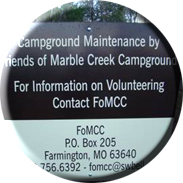Select Projects: |
|
|
PROFILE
OUR WORK
JOIN USCONTACT US |
|
This project aimed to (1) explore the meanings diverse local stakeholders ascribe to the Cache River Wetlands, (2) examine their attitudes toward wetlands restoration, and (3) develop a set of recommendations for fostering community-based partnerships in restoration. The first phase of this project included development of an inventory of current and potential community partners. A partner database was generated with contact information for over 200 individuals and organizations in a five-county area encompassing the Cache River Wetlands. The second phase included conducting key informant interviews with a sample of community members representing diverse experiences and backgrounds such as agricultural producers, local government officials, educators, nature-based tourism business owners, and environmentalists. Focus groups were also conducted with Cache River Joint Venture Partnership (JVP) members. The final phase of the project included analysis of the qualitative data gathered and the development a Community Partnership Handbook for JVP managers. The Handbook has been used to guide public involvement processes, inform environmental education programs, and to further engage local residents in restoration efforts.
 A Community Partnership Assessment in the Cache River Wetlands of Southern Illinois.
Cypress Creek National Wildlife Refuge, the Cache River Joint Venture Partnership, and The Nature Conservancy
A Community Partnership Assessment in the Cache River Wetlands of Southern Illinois.
Cypress Creek National Wildlife Refuge, the Cache River Joint Venture Partnership, and The Nature Conservancy
This project aimed to (1) explore the meanings diverse local stakeholders ascribe to the Cache River Wetlands, (2) examine their attitudes toward wetlands restoration, and (3) develop a set of recommendations for fostering community-based partnerships in restoration. The first phase of this project included development of an inventory of current and potential community partners. A partner database was generated with contact information for over 200 individuals and organizations in a five-county area encompassing the Cache River Wetlands. The second phase included conducting key informant interviews with a sample of community members representing diverse experiences and backgrounds such as agricultural producers, local government officials, educators, nature-based tourism business owners, and environmentalists. Focus groups were also conducted with Cache River Joint Venture Partnership (JVP) members. The final phase of the project included analysis of the qualitative data gathered and the development of a Community Partnership Handbook for JVP managers. The Handbook has been used to guide public involvement processes, inform environmental education programs, and further engage local residents in restoration efforts.
- Development of Funding Solutions for Farmland Preservation.
City of Virginia Beach, Virginia
The City of Virginia Beach, Virginia was formed in 1963 through the consolidation of the beach city with suburban and rural Princess Anne County. The city covers the entire eastern border of Virginia and includes all of the area from the Chesapeake Bay to the North Carolina border, and has the largest population of any city in the state. In the spring of 1995, the city hired a Resource Dimensions associate to assist it in instituting an installment-purchase program to acquire easements on farmland. He advised City Council on creating a dedicated funding source from property taxes, worked closely with bond counsel in Norfolk to craft documents that met state and local legal requirements as well as federal tax regulations, and explained the program to numerous potential participants. He also developed spreadsheet cash-flows that estimated that the city could afford to purchase $57 million of easements over the succeeding five years, analyzed the program's impact on the city's debt structure and was instrumental in obtaining investment-grade ratings on the program from Moody's Investors Service and Standard & Poor's. To date, the City has purchased easements on 6,800 acres using 59 installment-purchase agreements totaling $21 million. - Analysis of Debt Capacity and Financing Alternatives for Governmental Land Conservation Agency.
Peninsula Open Space Trust and Mid-Peninsula Regional Open Space District
A Resource Dimensions associate served as financial advisor to Peninsula Open Space Trust (POST) in connection with its disposition of conserved land to the Mid-Peninsula Regional Open Space District in northern California. The leading non-profit land conservation organization in the San Francisco Bay area, POST serves as purchasing agent and a fast response team for the tax-supported Open Space District and its acquisition of land on the San Francisco peninsula for recreation and open space. He assisted POST in analyzing the District's financial statements and rating agency reports, analyzed debt capacity and financing alternatives in connection with its acquisition of lands from POST, and assisted POST in negotiating the timing and amount of the District's commitment to acquiring POST holdings. - Municipal Bond Advisory and Development of Funding Solutions.
Howard County, Maryland
As financial advisor to Howard County from 1988 to 2007, a Resource Dimensions affiliate completed $2.7-billion of capital financing assignments, including $1-billion of new money general obligation public improvement and Metropolitan District bonds sold in 18 series from 1989 to 2007, $643-million of refunding bonds sold in seven series from 1991 to 2004, $880-million of bond anticipation notes sold as variable-rate notes, fixed-rate one-year notes and commercial paper from 1990 to 2007 and $90-million borrowed in five series from 1992 to 2006 from the Maryland Water Quality Financing Administration. He also helped develop a long-term program to upgrade Howard County's rating to AAA. He designed and implemented Howard County's installment purchase farmland preservation financing program, which received an Award of Excellence in Financial Management from the Government Finance Officers Association. Through this program, the county completed $56 million of installment purchase agreements issued in 90 transactions from 1990 to 2003 to acquire 10,000 acres of conservation easements. - Structuring of Bond Financing and Acquisition Funding Solutions Using Dedicated Sales and Use Taxes.
Garden State Preservation Trust
A Resource Dimensions affiliate was retained by the Trust in 2002 to advise staff on the use of installment purchase agreements to acquire land and easements. The GSPT, a New Jersey state agency, created by an act of the state legislature in response to a referendum, approved by the state's voters in 1998, that dedicated $98-million in annual sales and use taxes for 30 years to preservation of half of the state's remaining undeveloped land. He reviewed the GSPT's enabling legislation and legal documentation for the Trust's $1.15 billion in bonds to make recommendations on how an installment purchase program might be structured. He also served as financial advisor for the GSPT's 2005 issuance of $209.6 million of Open Space and Farmland Preservation Refunding Bonds. He proposed an innovative structure that refunded interest (but not principal) on selected maturities of outstanding bonds, to allow GSPT to fund over $4-million of additional preservation projects across the state. - Social Capital Assessment Protocol for Forest Associated Communities.
NOAA and USDA Forest Service
The project goal was to develop an approach that could be used to swiftly assess the expanse of values and benefits associated with sound agency-community relationships in resource-dependent regions. Resource Dimensions participated in the evaluation of current social assessment methodologies and the development of a rapid assessment protocol designed to aid in measuring the level and type of social capital the Forest Service has in small, resource-based communities. Resource Dimensions conducted several pilot studies in various communities across the nation to assess the protocol's effectiveness. The protocol included completion of community and agency social capital checklists, interviews, on-site review, reporting, and a discovery through a focus/work group format.
Copyright © 2009-2012 • Resource Dimensions, LLC • Main Tel: 253.514.8350 • Skype: 253.777.3733 • info@ecologicalecon.com

